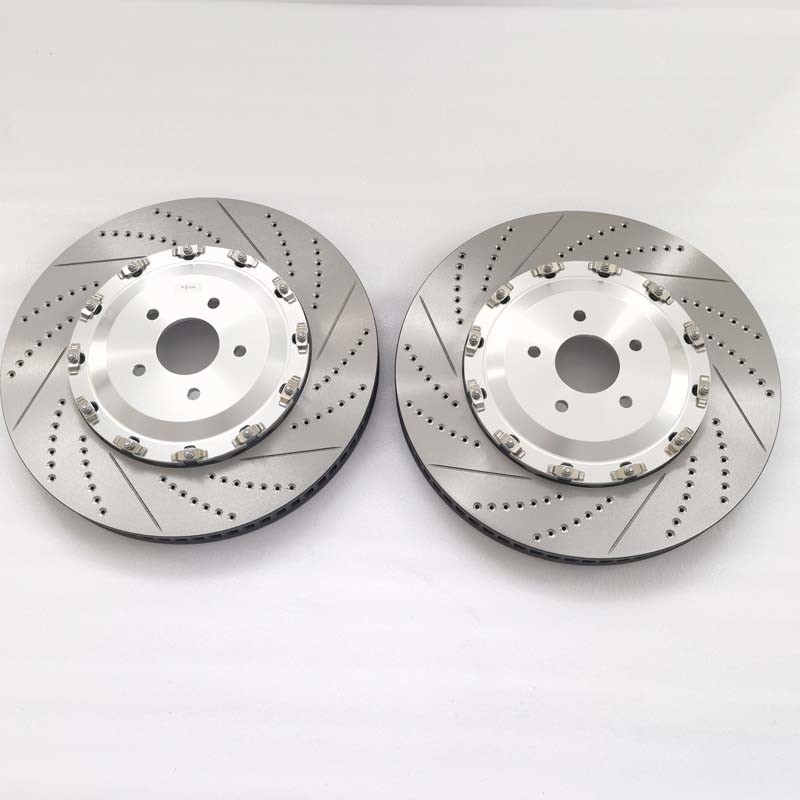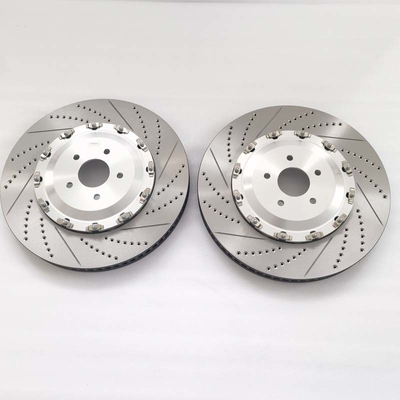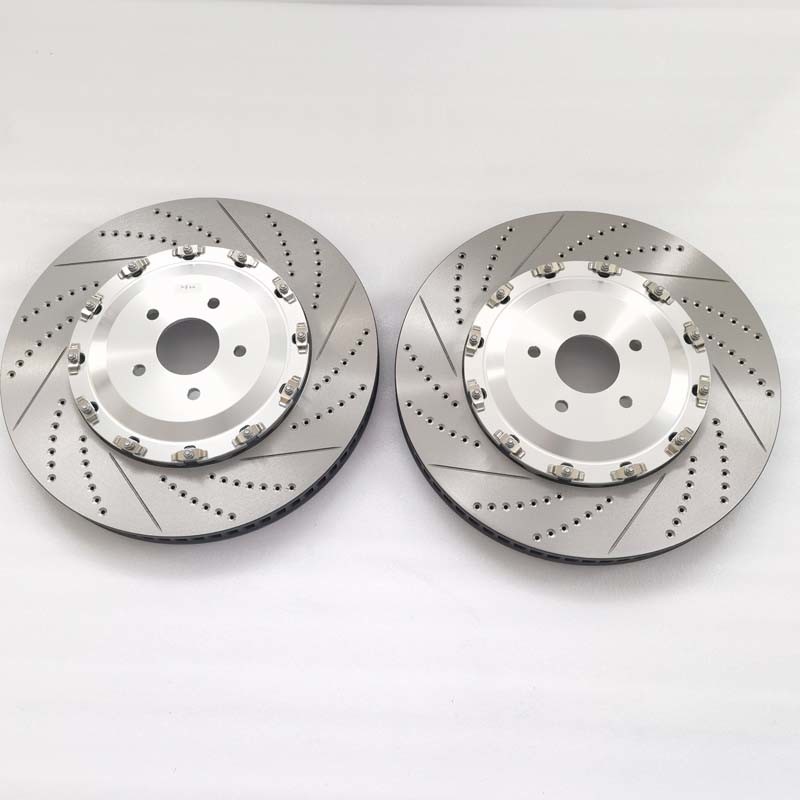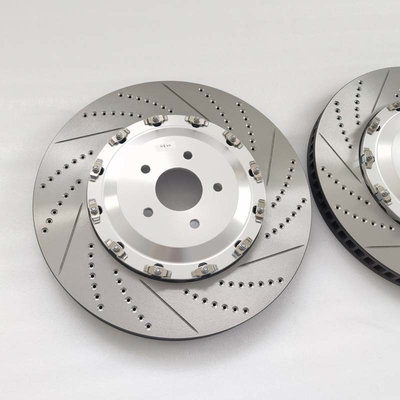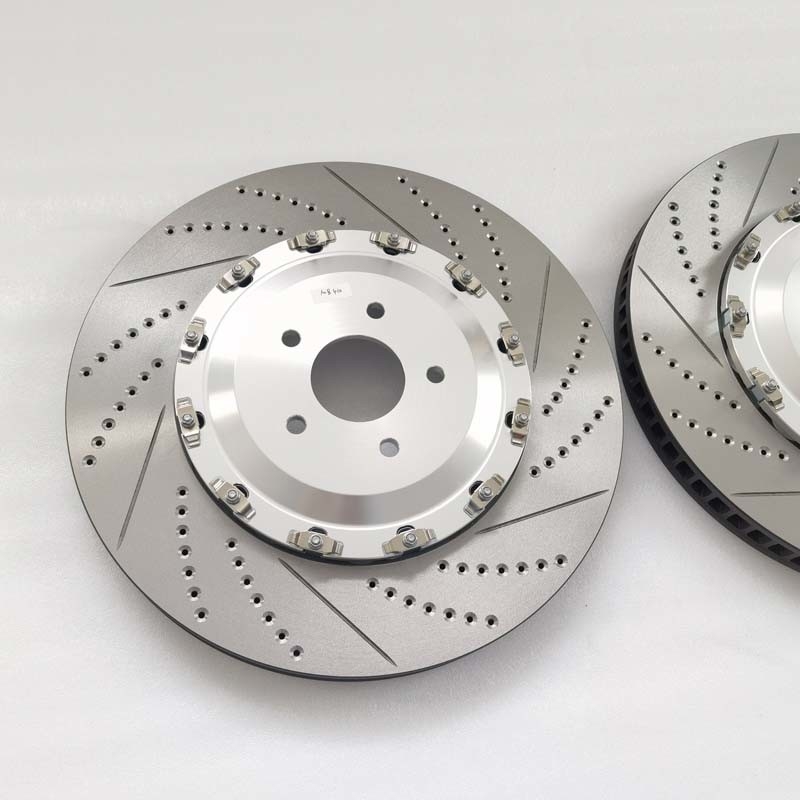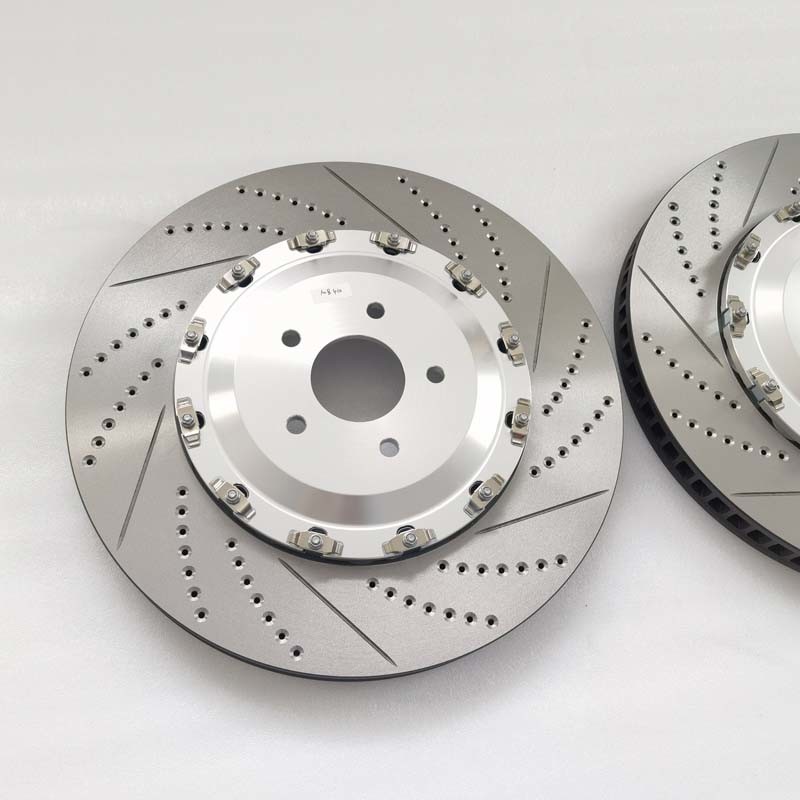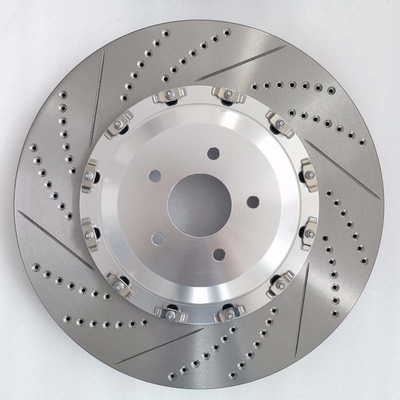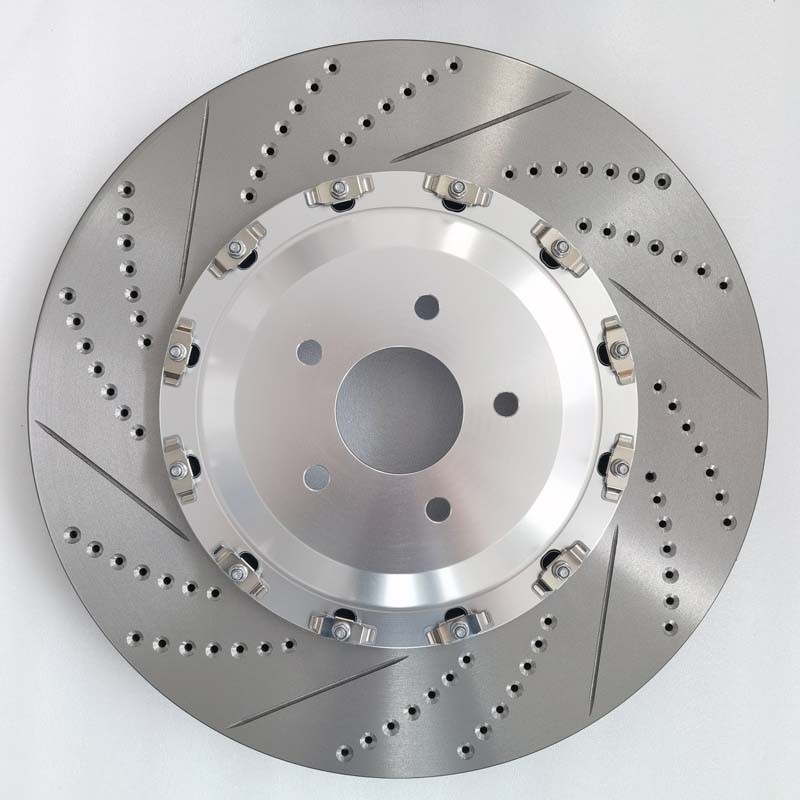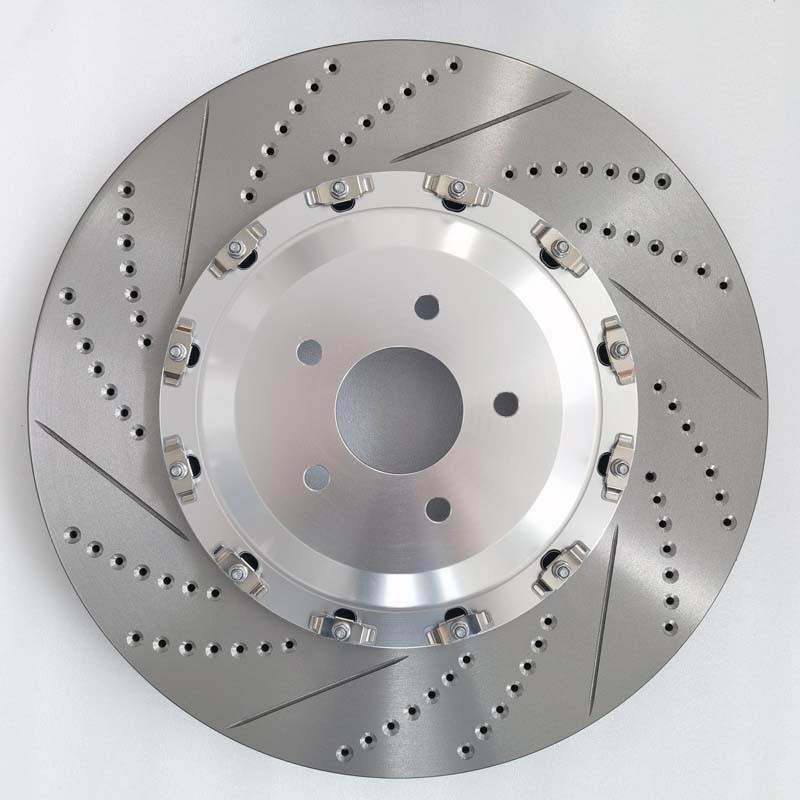Product Description
Cast Iron Brake Disc 410*36mm Drilled Slotted Rotor Floating Center
TYPES OF BRAKE DICS
During downhill driving, the friction ring can reach temperatures of up to 700°C (red heat).
Ventilated brake
For this reason, ventilated brake discs are very often used for better cooling – primarily at the front axle. Their surface area is much larger and better suited for heat exchange. Compared with ventilated brake discs, solid brake discs can only dissipate heat to the environment more slowly.
The friction rings on ventilated brake discs are interconnected by means of webs in the shape of ribs or domes. The rotation of the brake disc generates air suction which draws air out from the inside of the brake disc through a ventilating duct. The tiny particles of air that this causes to come into contact with the surface of the brake disc absorb the thermal energy and transport it outwards.
Perforated or grooved brake discs
Even more effective cooling can be achieved with perforated or grooved brake discs. These types of disc also benefit from being less sensitive to wet. However, they are more expensive and can in some circumstances generate much more noise during braking.
NOISE GENERATION AND VIBRATIONS DURING BRAKING
Friction rings on brake discs generally have a tendency to deform when heated up. This can lead to unpleasant noise generation and vibrations during braking (brake judder). It is for this reason that well-known brake manufacturers are striving to find ways of adapting the design of brake discs in order to prevent deformation. However, in some cases, brake judder is unavoidable, as vibrations or play in wheel bearings can bring brake pads into repeated contact with the brake disc even when no active braking is taking place. The resulting localised flatting of the brake disc, which after a certain period of time will lead to pulsating braking, then becomes apparent to the driver in the form of judder.
BRAKE DISC MATERIAL
Brake disc material must meet strict requirements. It must be able to withstand
mechanical stress applied as a result of pressure and tensile forces during braking,
centrifugal forces at high wheel speeds and
thermal loads.
Grey cast iron
Most brake discs are made from a special grey cast iron (pearlitic grey cast iron). Alloys with chrome and molybdenum increase resistance to wear and improve the material's hot crack characteristics. Furthermore, a high carbon content increases heat absorption rates.
Ceramic materials
Ceramic materials (carbon fibre ceramic or carbon ceramic) are also increasingly being used to manufacture brake discs. The benefits of these brake discs are
high dimensional stability in all temperature ranges,
low own weight, good brake response,
extremely long service life and
very good fading characteristics.
Their disadvantages include poor heat conductivity (which then requires special materials for the brake pads) and very high price. The latter doubtless explains why ceramic brake discs are currently only used as special equipment on high-power premium class vehicles.
| Product name |
Cast iron brake disc |
| Brake Disc Size |
410*36mm disc with center cap |
| Bracket for caliper model |
For Brembo BM8 |
| Center Cap Design |
Brembo Floating Center hat |
| Disc Design |
Drilled Slot Disc |



 Your message must be between 20-3,000 characters!
Your message must be between 20-3,000 characters! Please check your E-mail!
Please check your E-mail!  Your message must be between 20-3,000 characters!
Your message must be between 20-3,000 characters! Please check your E-mail!
Please check your E-mail!
